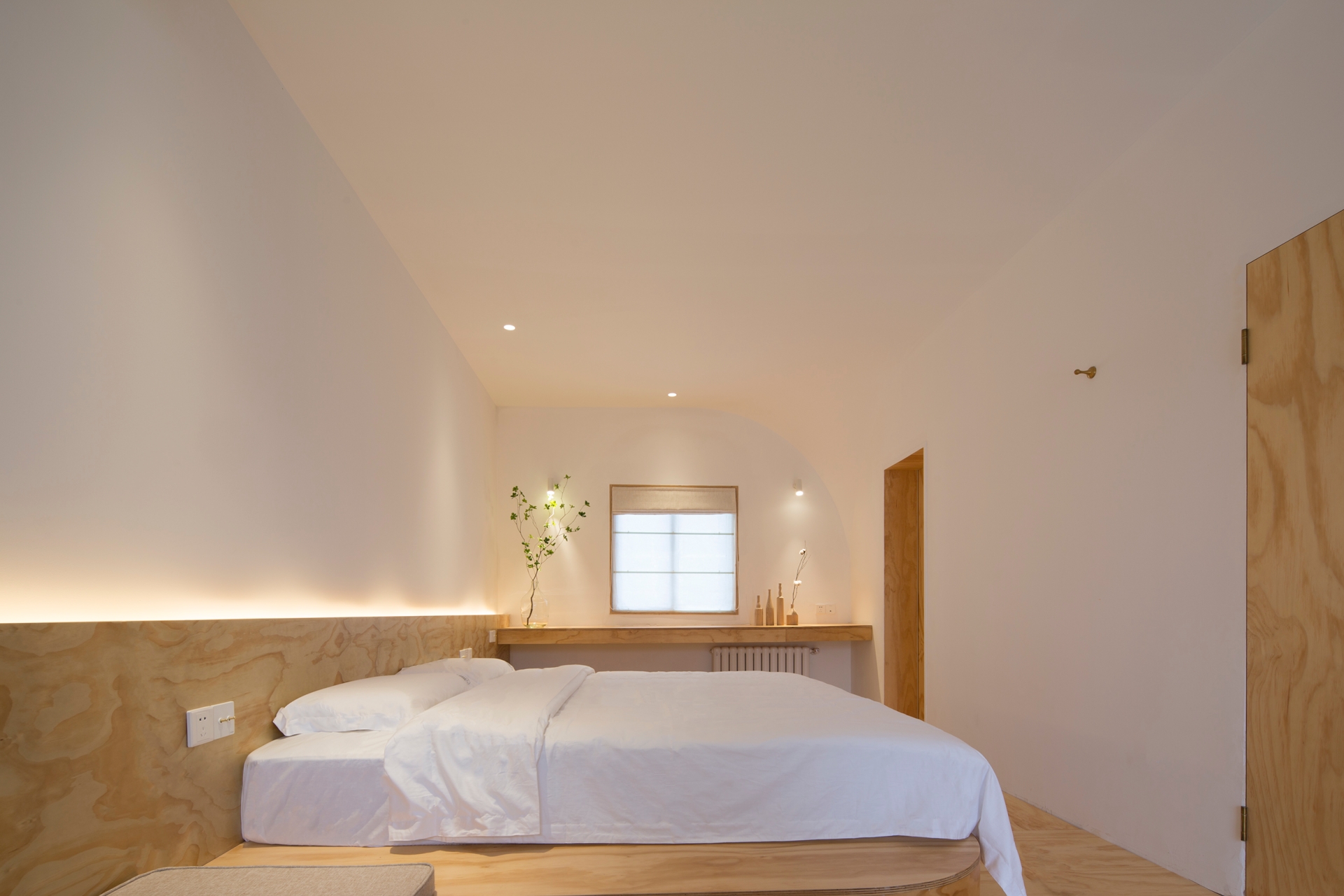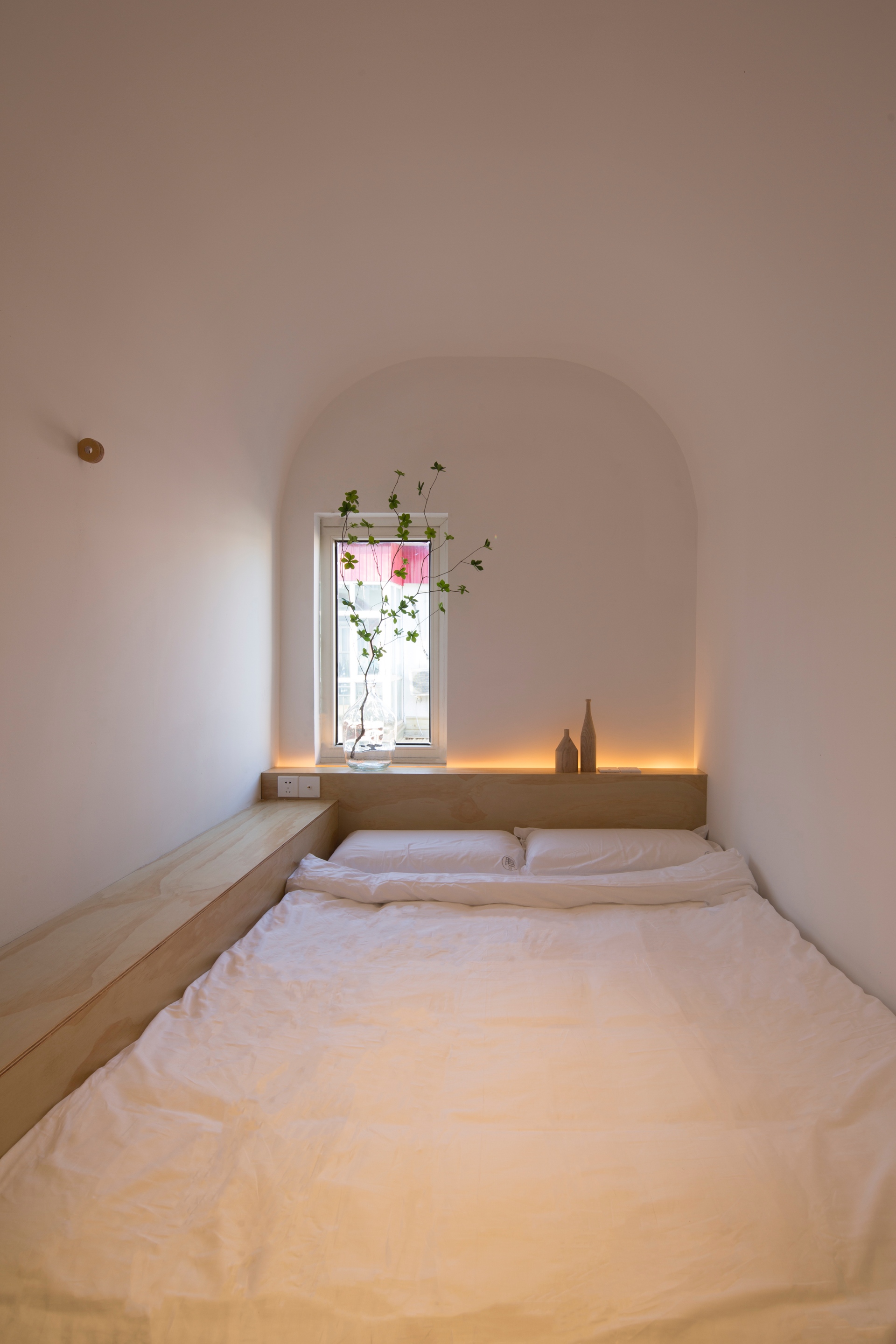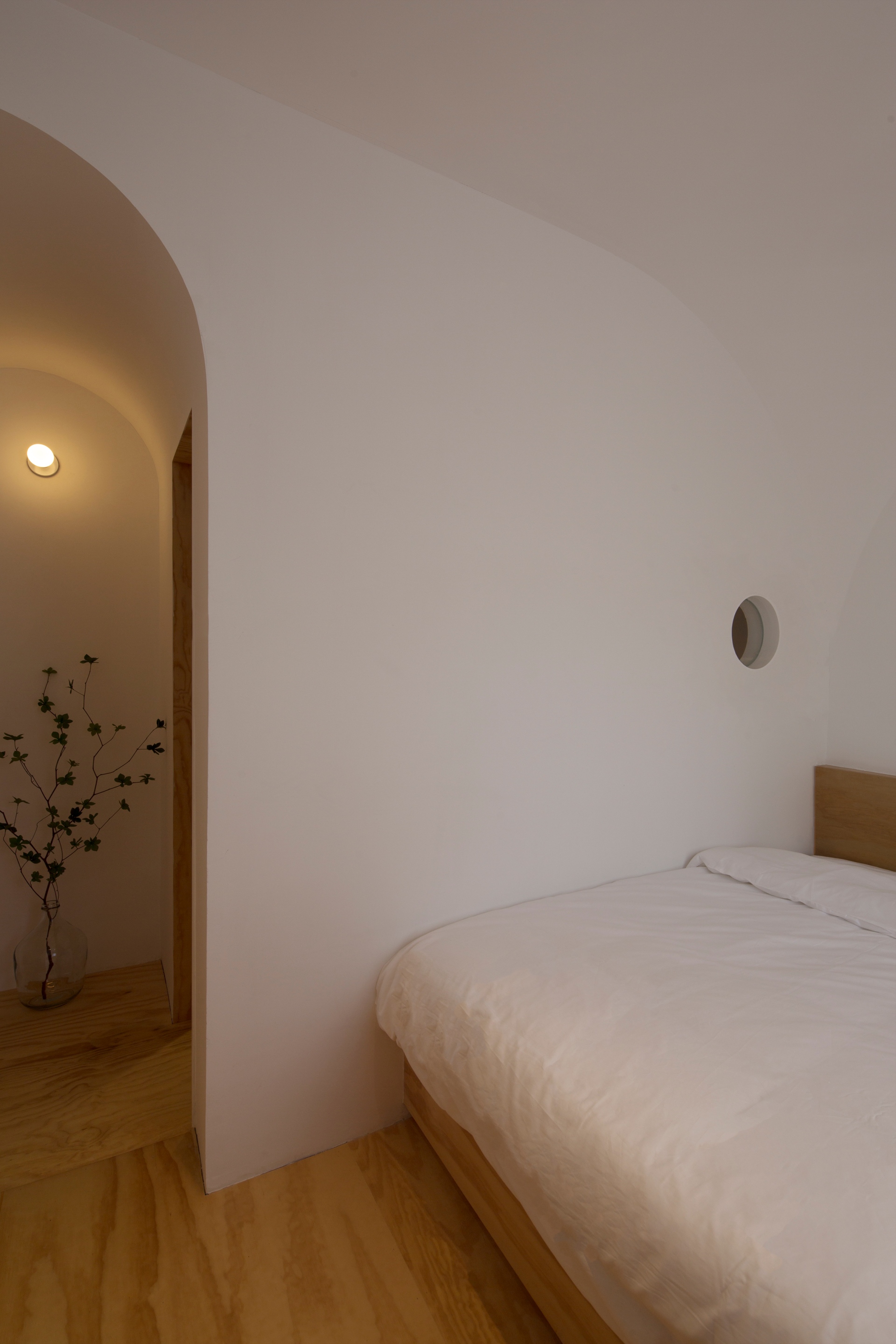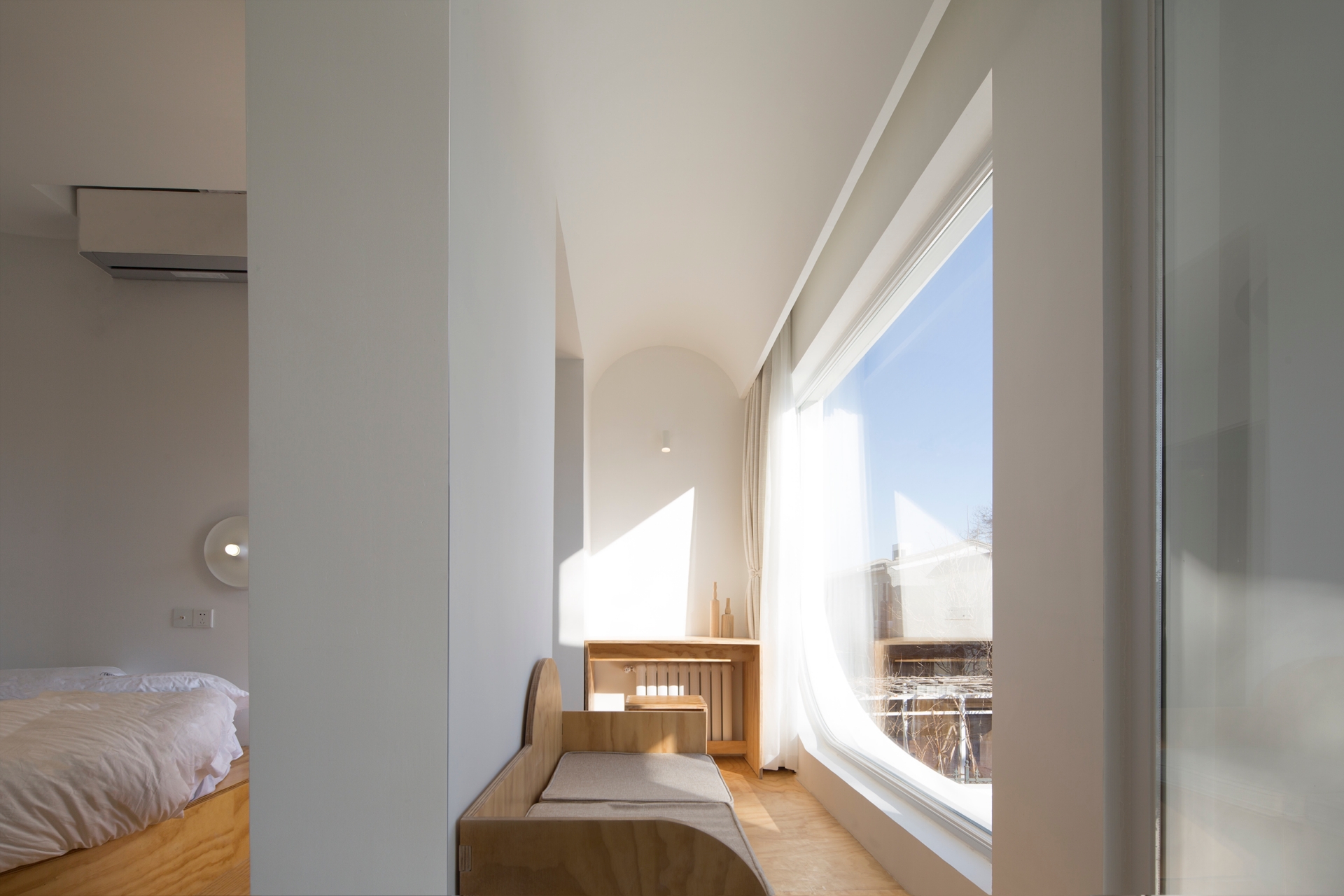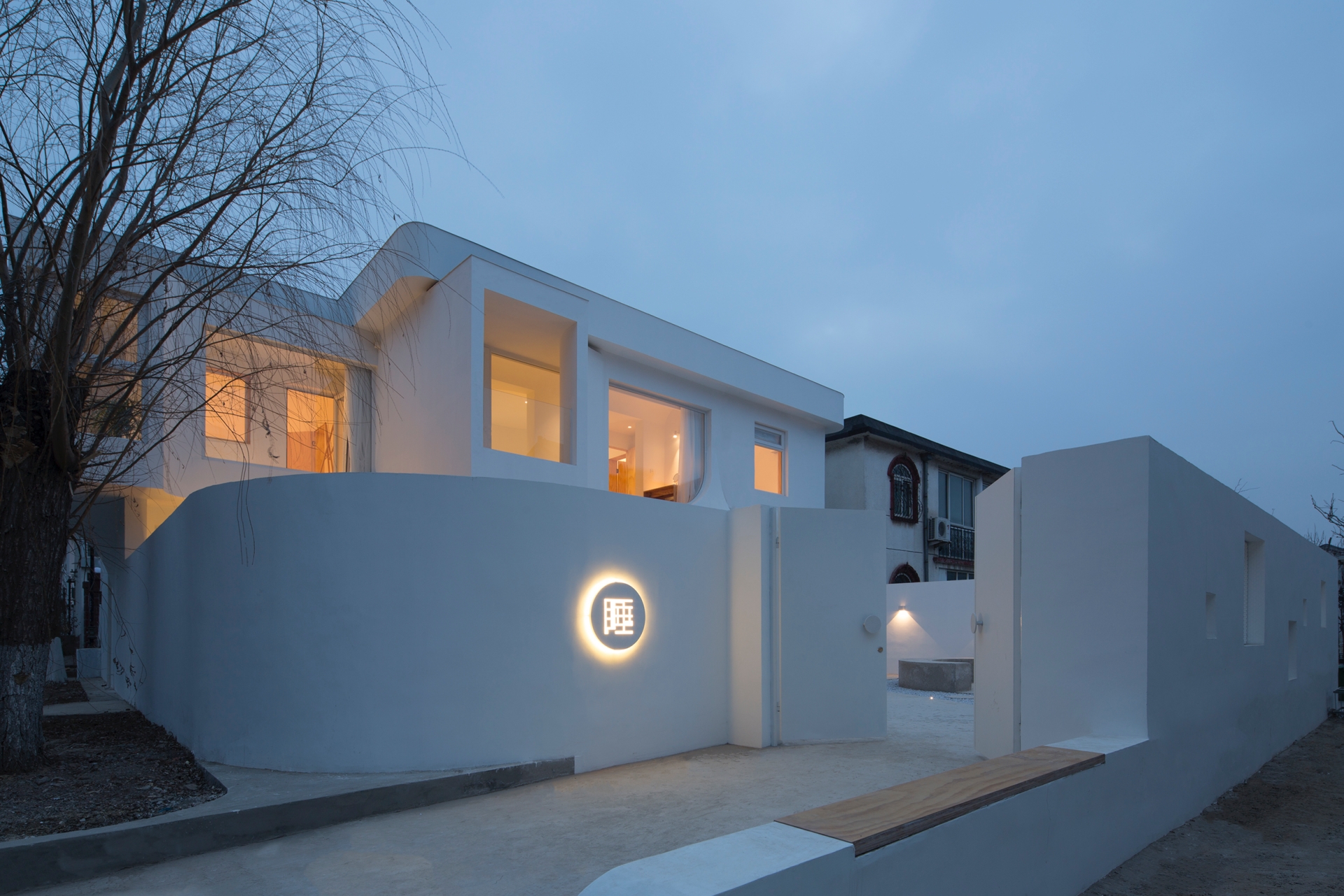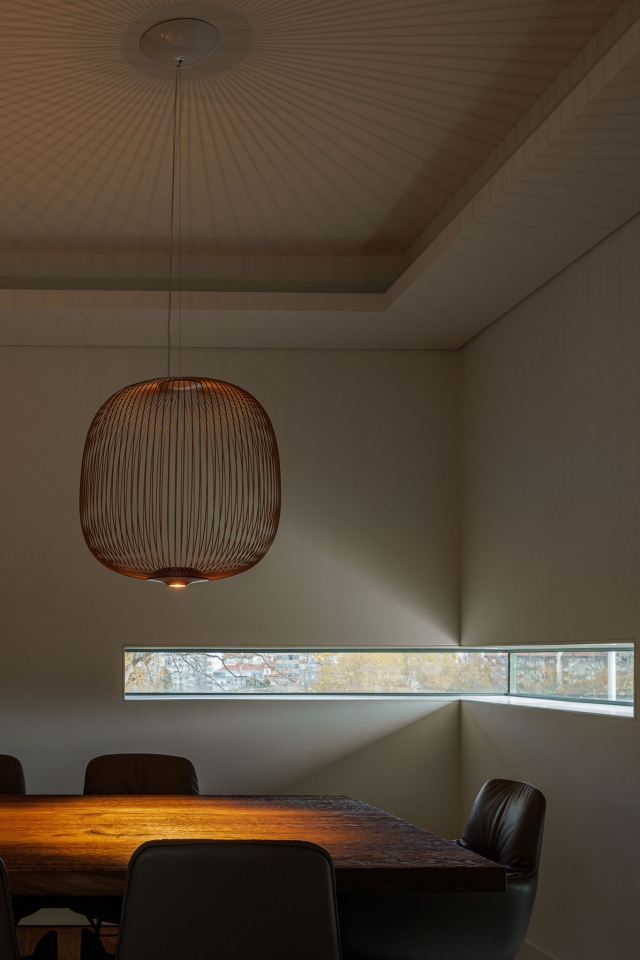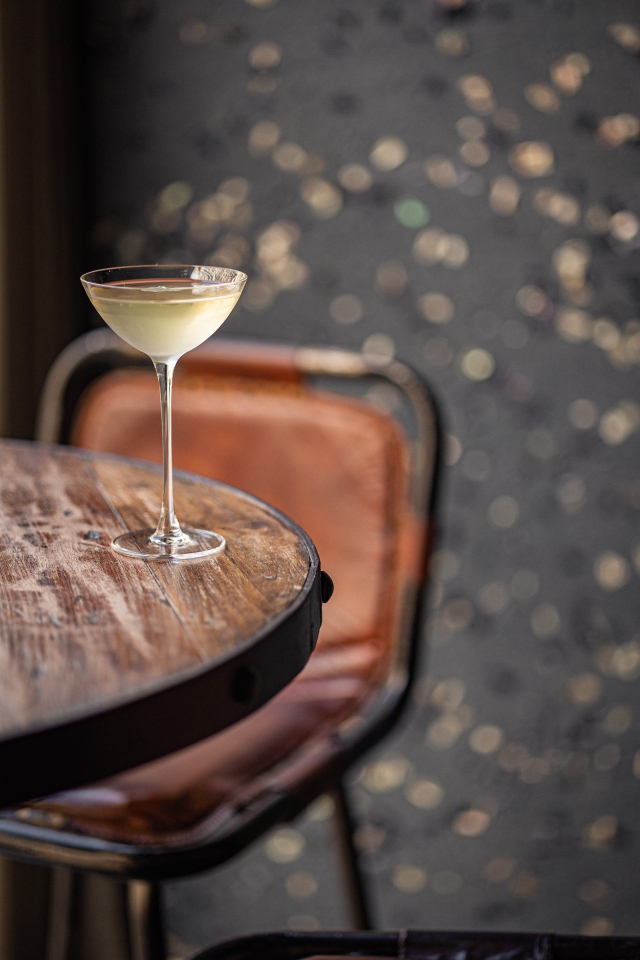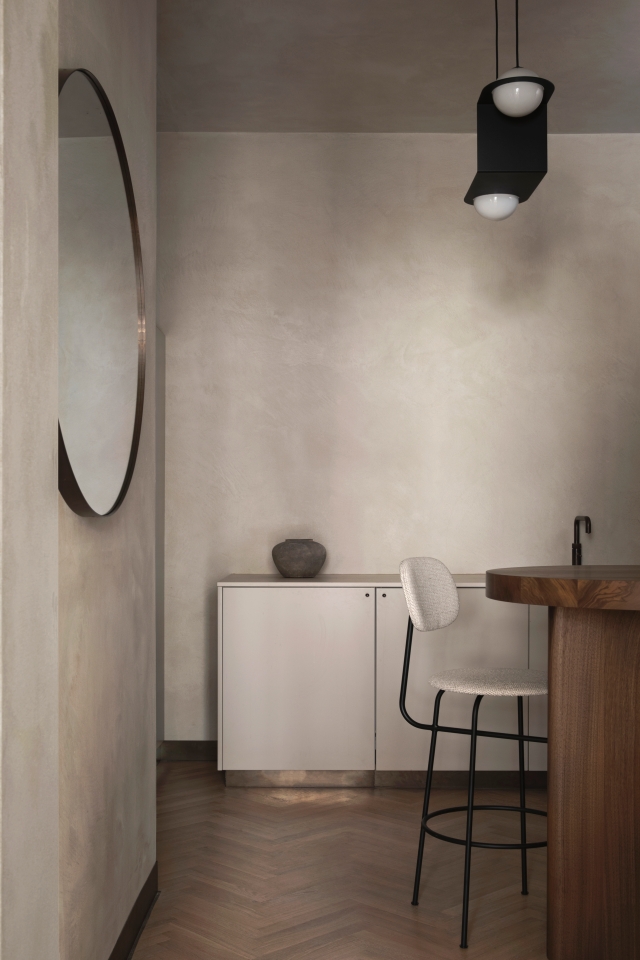At the project site, there is no farmland, but it is reminiscent of a back garden in Beijing, where small houses are aligned, all similar in appearance with their white walls and red windows and evoke the 600-year history of the Royal New Village. The building is located in the eye-catching position northwest of the village - a two-story brick-concrete building, originally used as residential and office. Atelier d’More was commissioned to renovate the space, as the Sleep Institute's first B&B project near Beijing Universal Studios. The existing weather-beaten exterior walls were eager to be refurbished and restored.
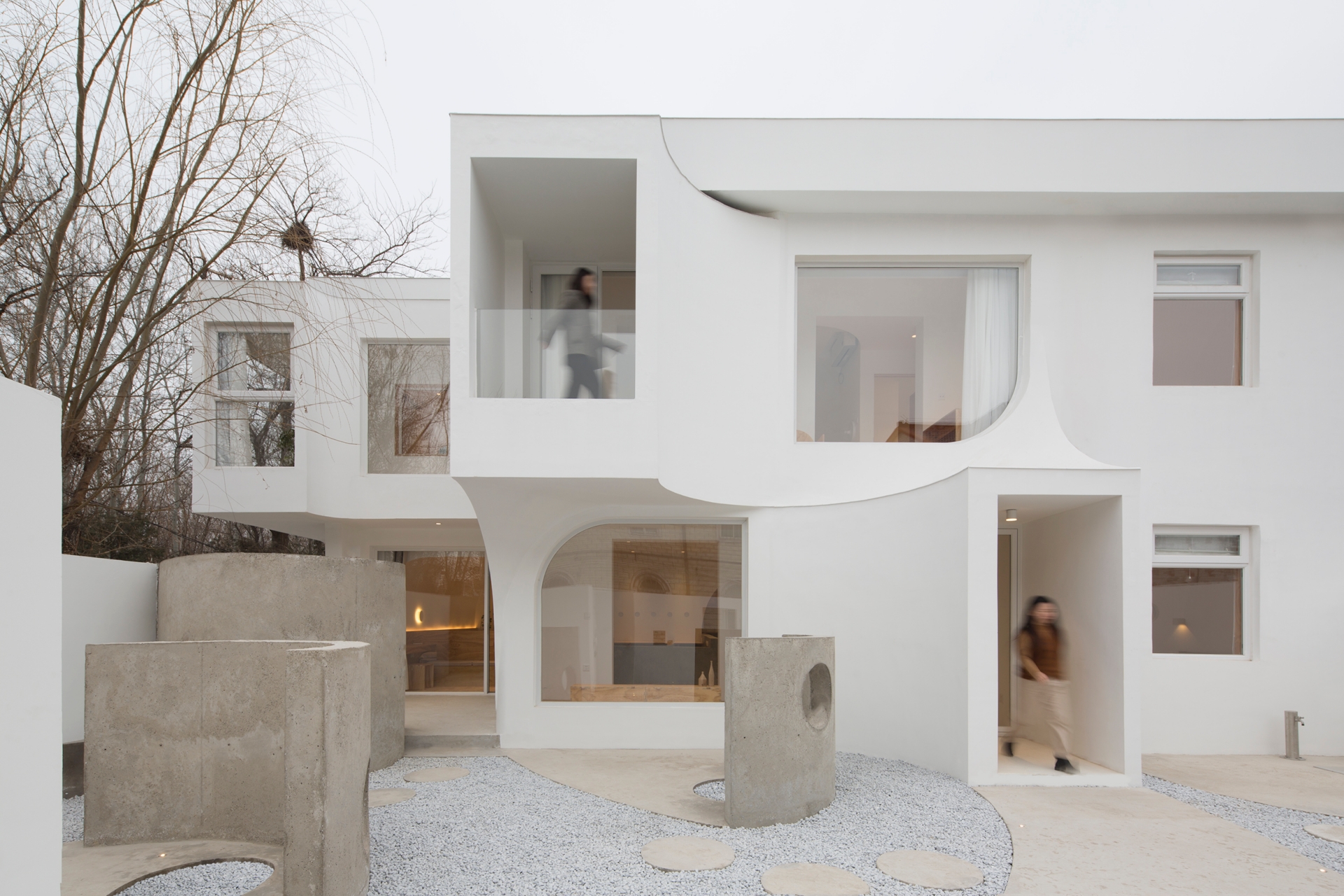
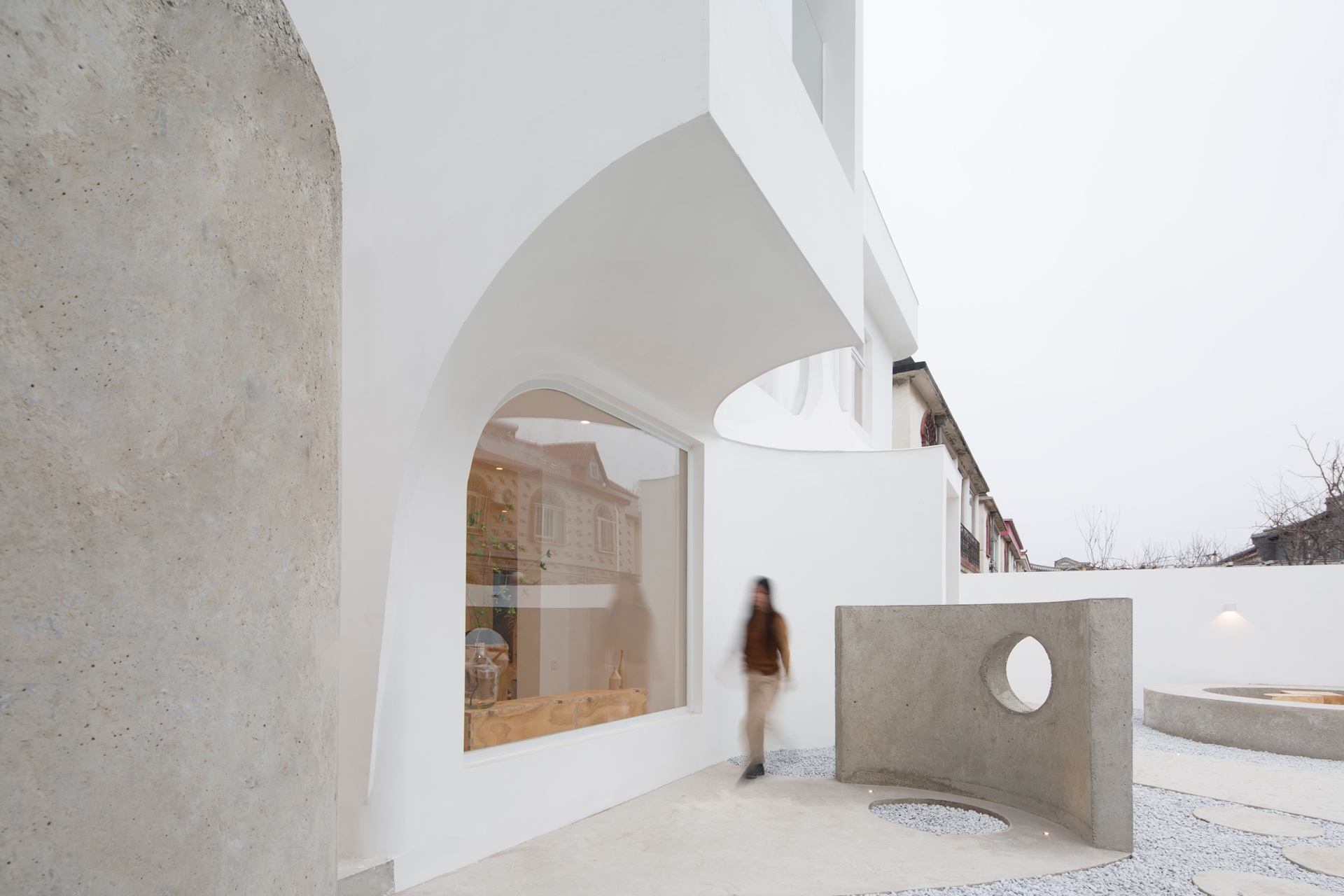
Given the lack of scenery in the surrounding environment, the designers decided to conceive an inward view and create an interesting private garden, which led to the idea of the enclosed courtyard space. Only a few viewing frames are open on the south wall. In addition to the expansive blue sky and white clouds, all chaos and noise are isolated from the wall - the large glass windows of the building actively introduce the scenery and light of the courtyard, becoming a part of the indoor space experience. Reveal the designers, “We divided the rectangular courtyard of 100 square metres into several small semi-enclosed courtyards, trying to create an inner courtyard environment. Each courtyard would have a small tree as the protagonist - therefore, an organic connection is formed between the courtyards, and a series of interactions between the tearoom, guest rooms, walls and the courtyard are created under the multi-level space. When users enter the building, they can read the interior of the building in their own way and perspective, so the container function of the building can be reflected. The shadow moves with the light, and the scenery changes with people, making the architectural space filled with poetry.”
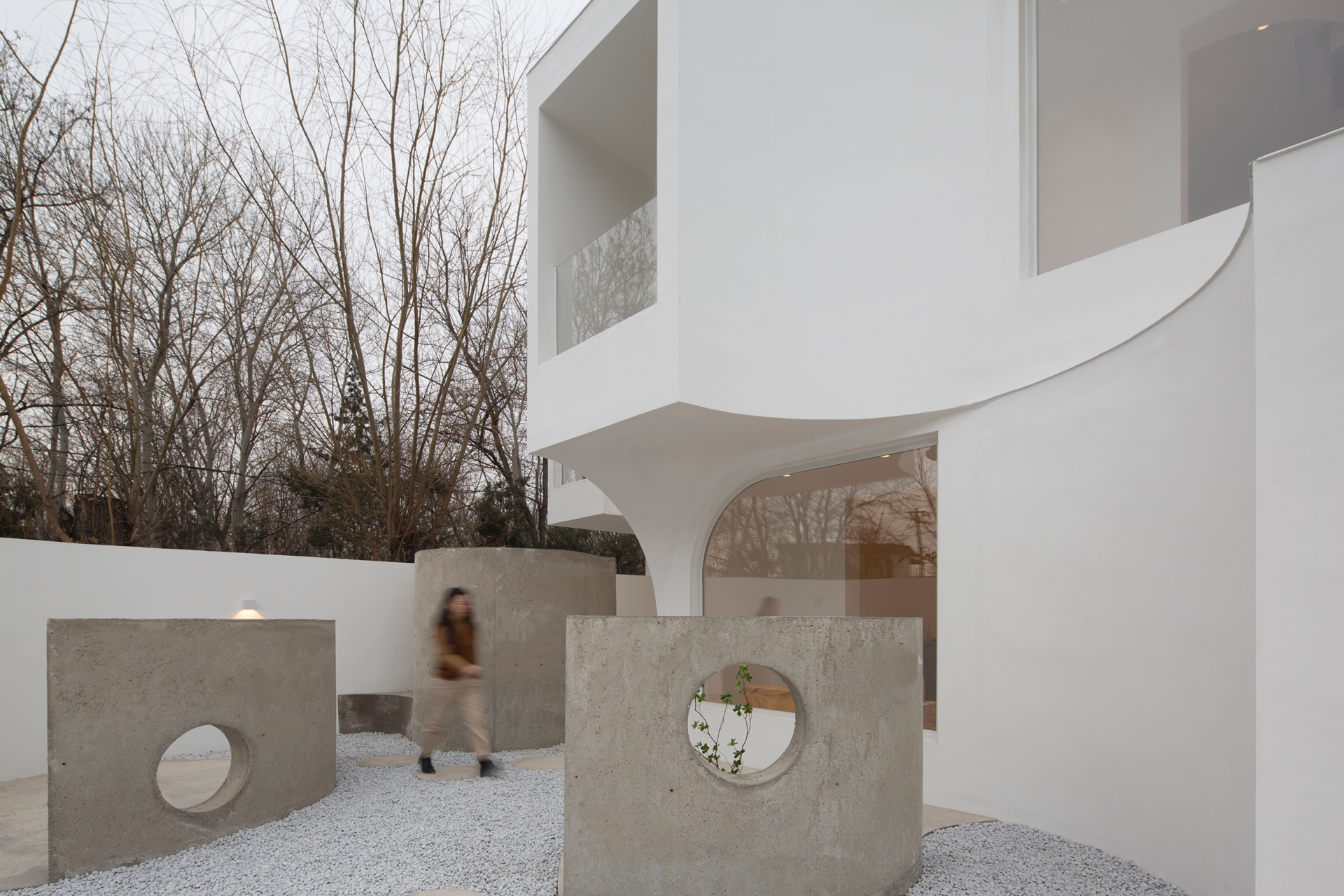

The design language of the architecture and interior is based on a quarter arc, which flows freely in the space with a rigorous attitude and increases the tension of the building by means of geometric composition. The outward extension of the building block on the facade is close to nature in a flowing posture, bringing the distance between architecture, nature and man closer. An all white facade makes the building abstract and sculptural; through the rendering of white material, the boundary between the wall and the top is blurred, and the flowing space and natural light blend together, bringing viewers a pure experience and space to dream.
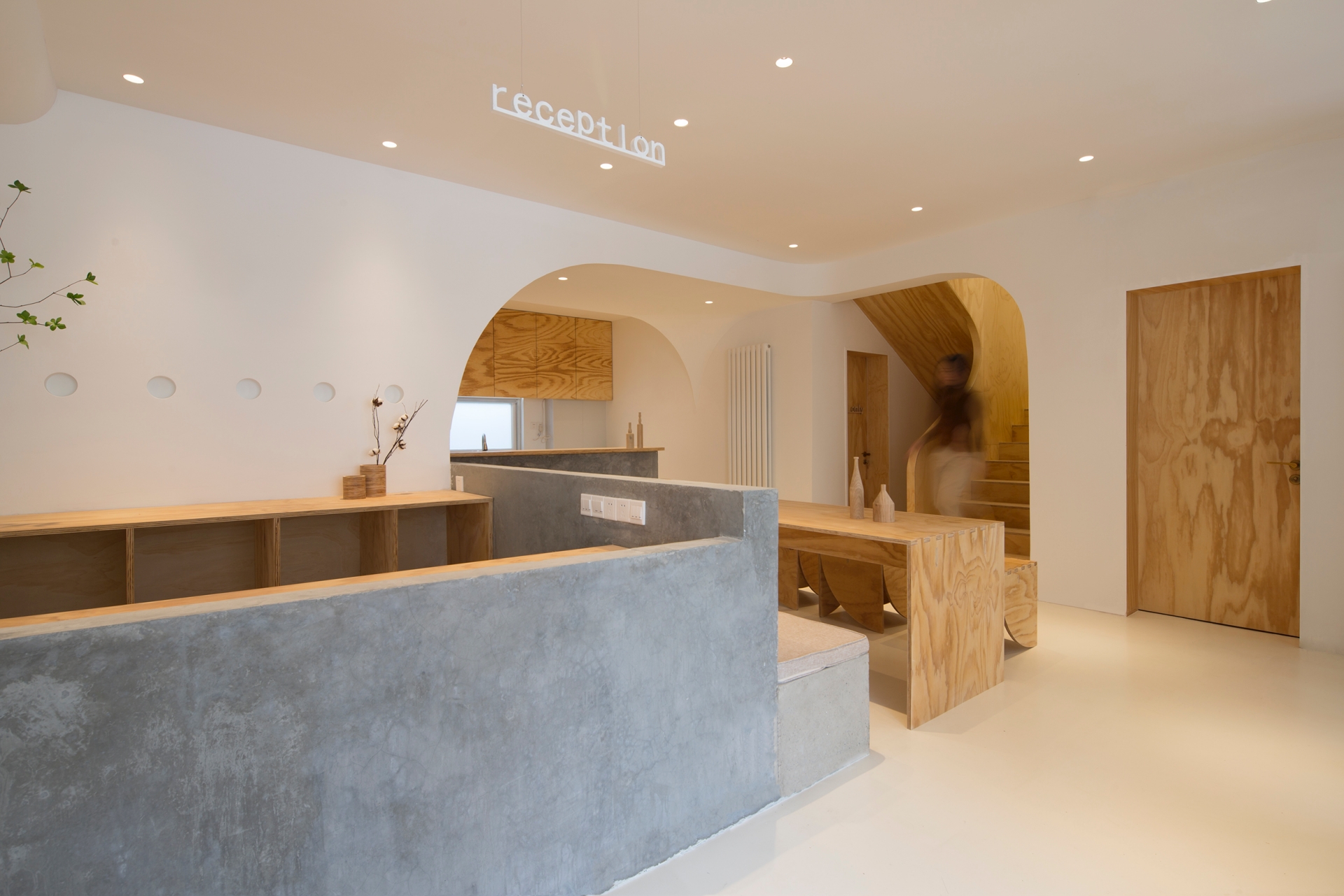
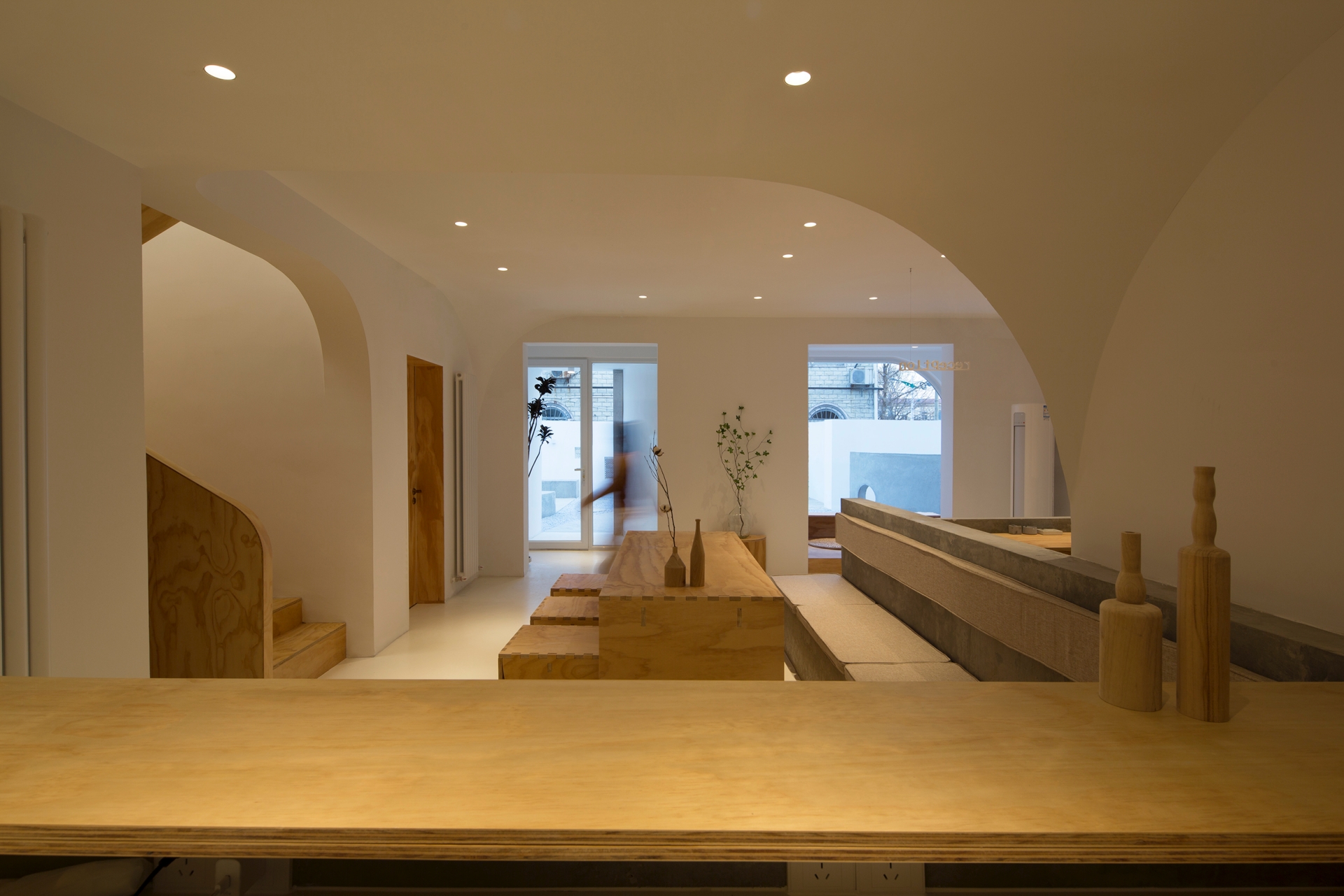
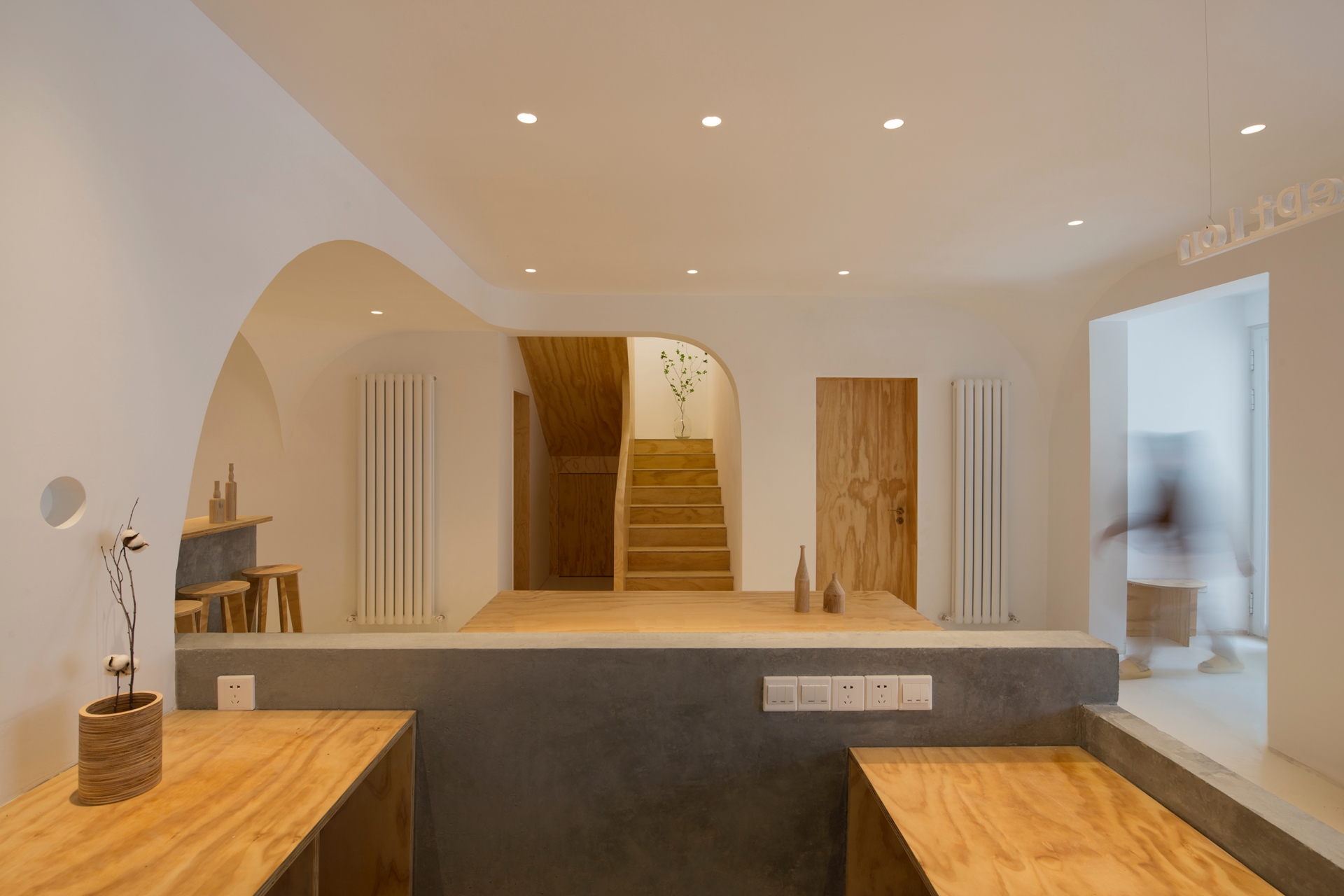
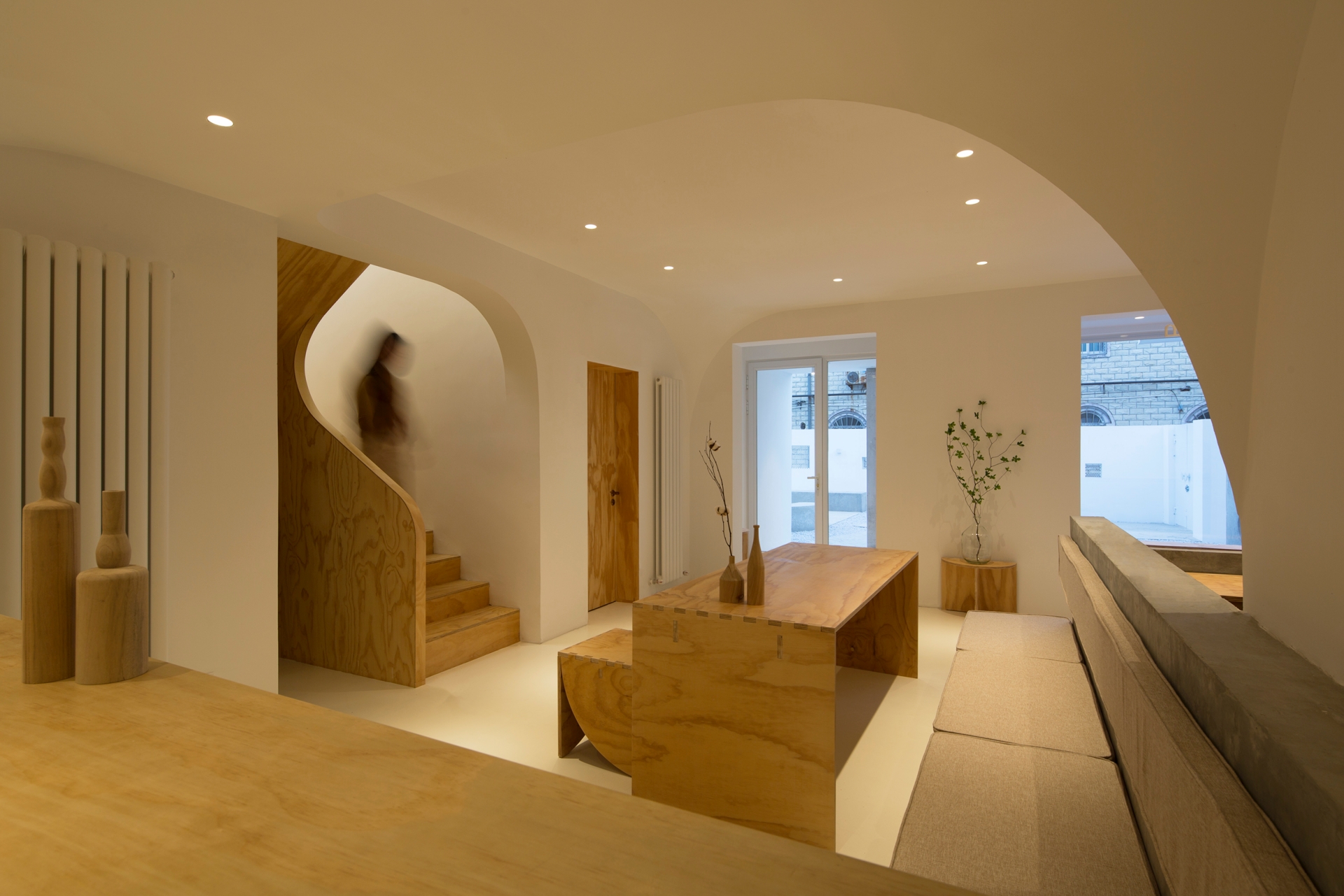
Atelier d’More has been engaged in the design and production of prefabricated assembled furniture for many years. Differing from the manufacturing industry, their method of developing the automation process for traditional decor is a slow one - their concept of furniture assembly is equivalent to turning on automatic gears for construction so that even the clients can operate it themselves. The firm regards this kind of assembling furniture as if it were a big toy - enabling the usually tedious construction work to become a game, where the workers, designers and owners can enjoy the process. Many of the interior furnishings and decor can be assembled on-site with prefabricated components, which have been successfully implemented in many of the company’s previous projects.
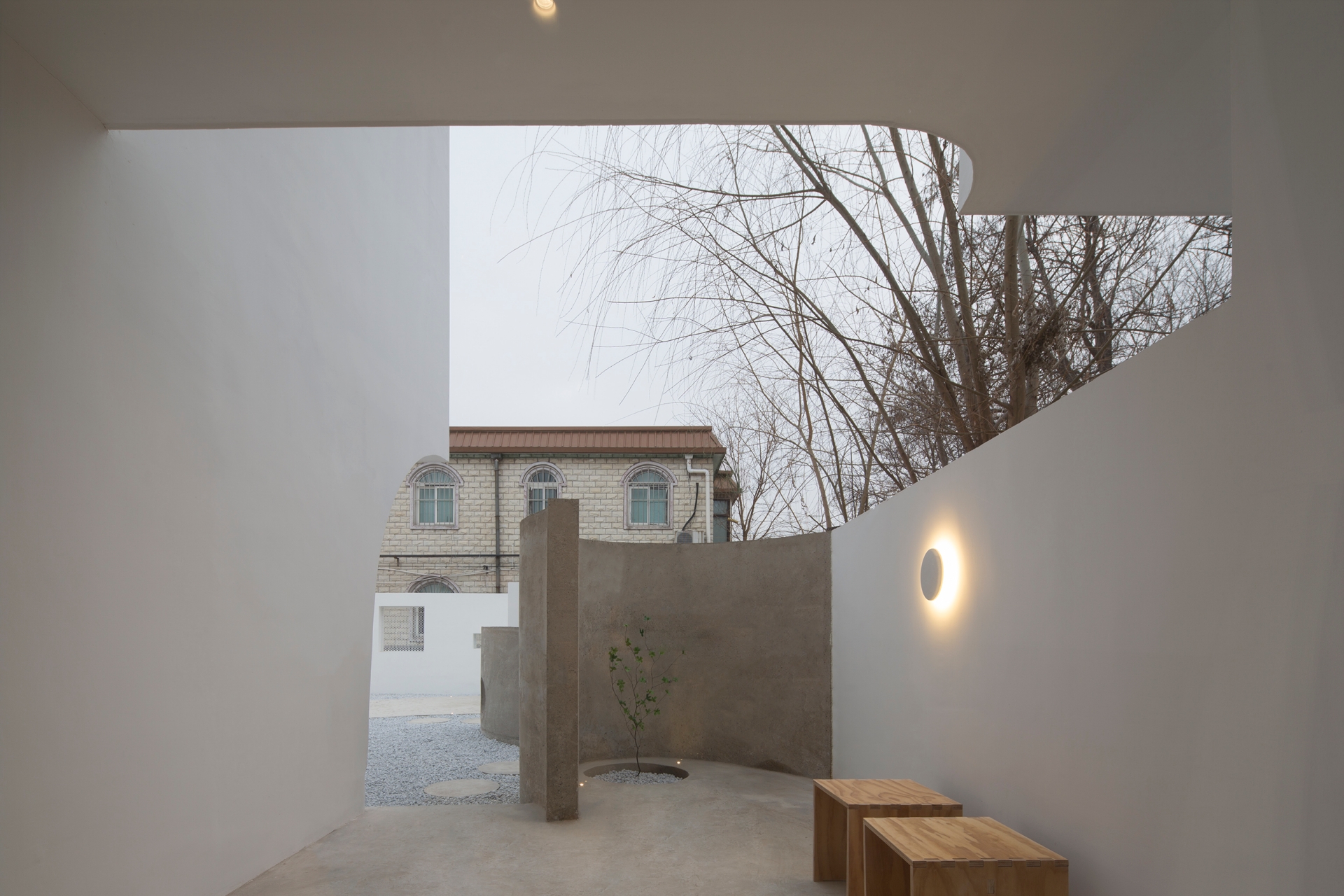
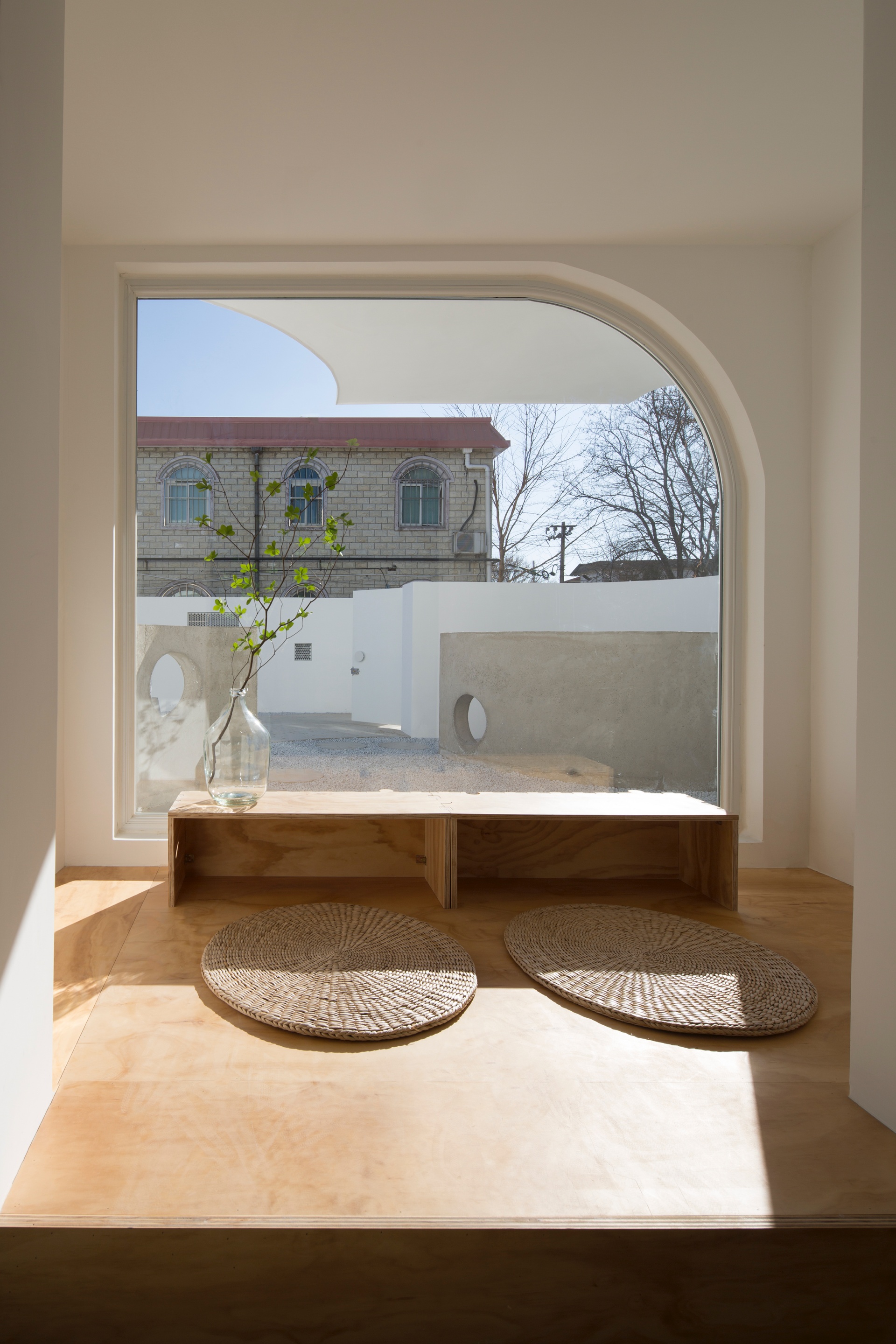
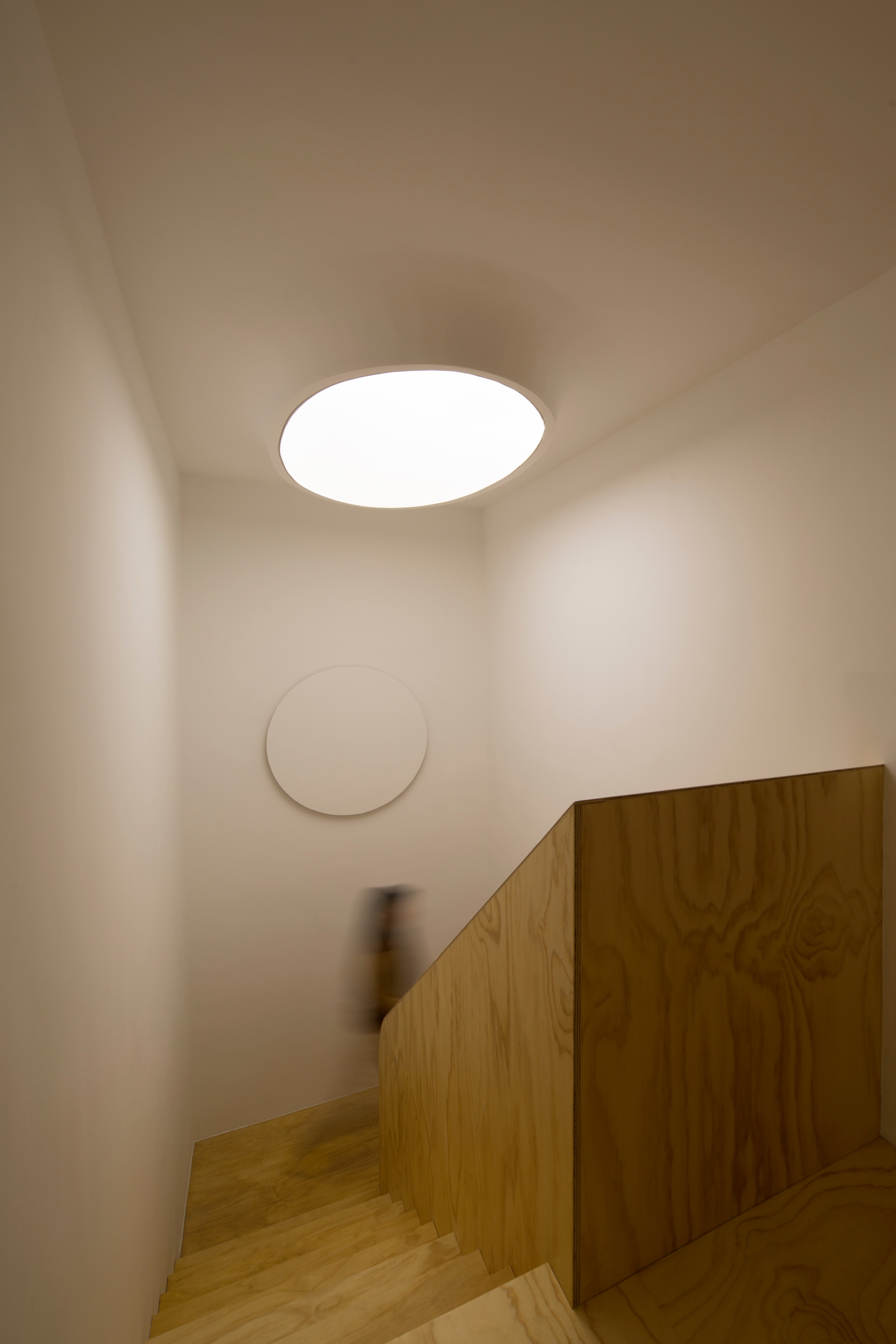
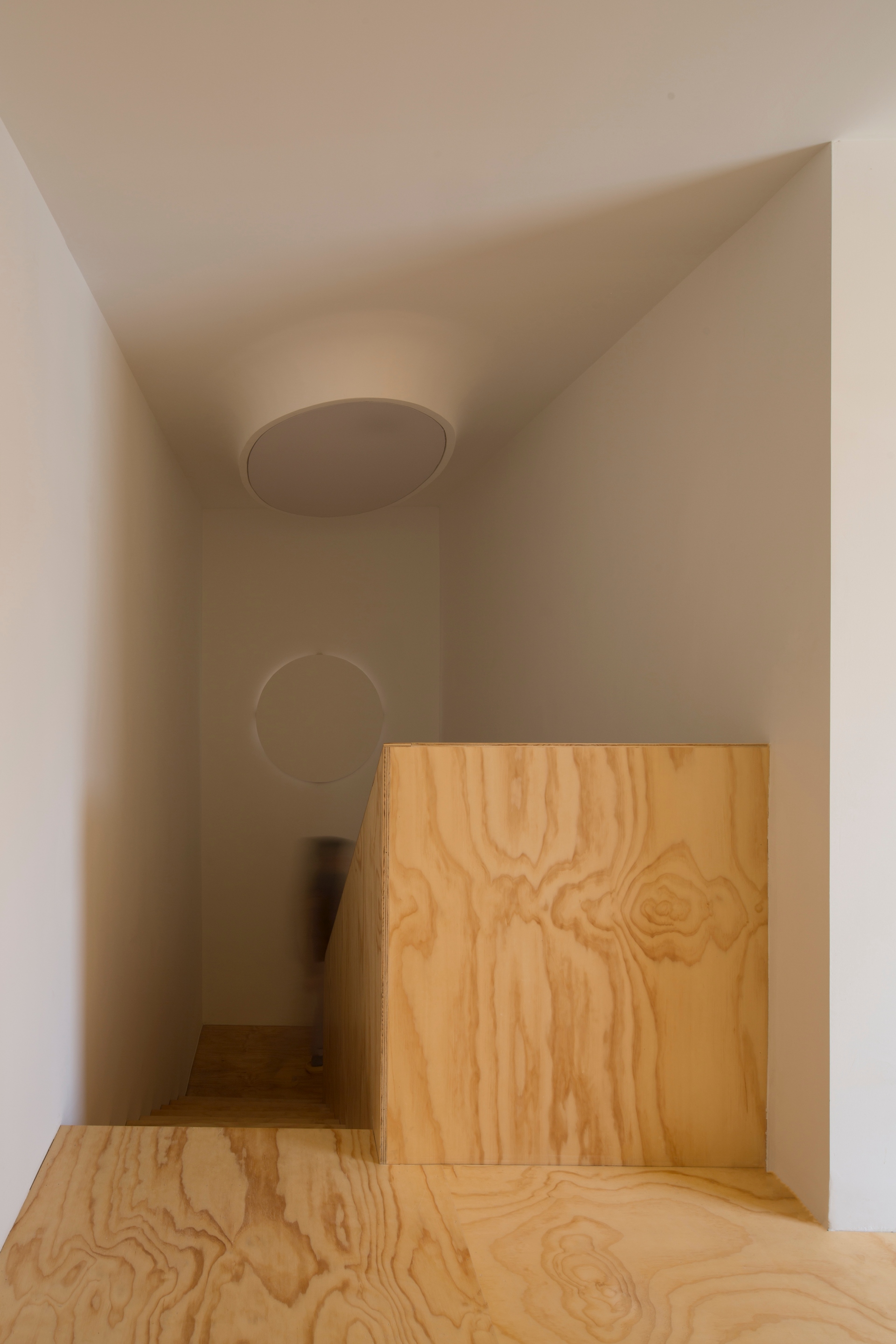
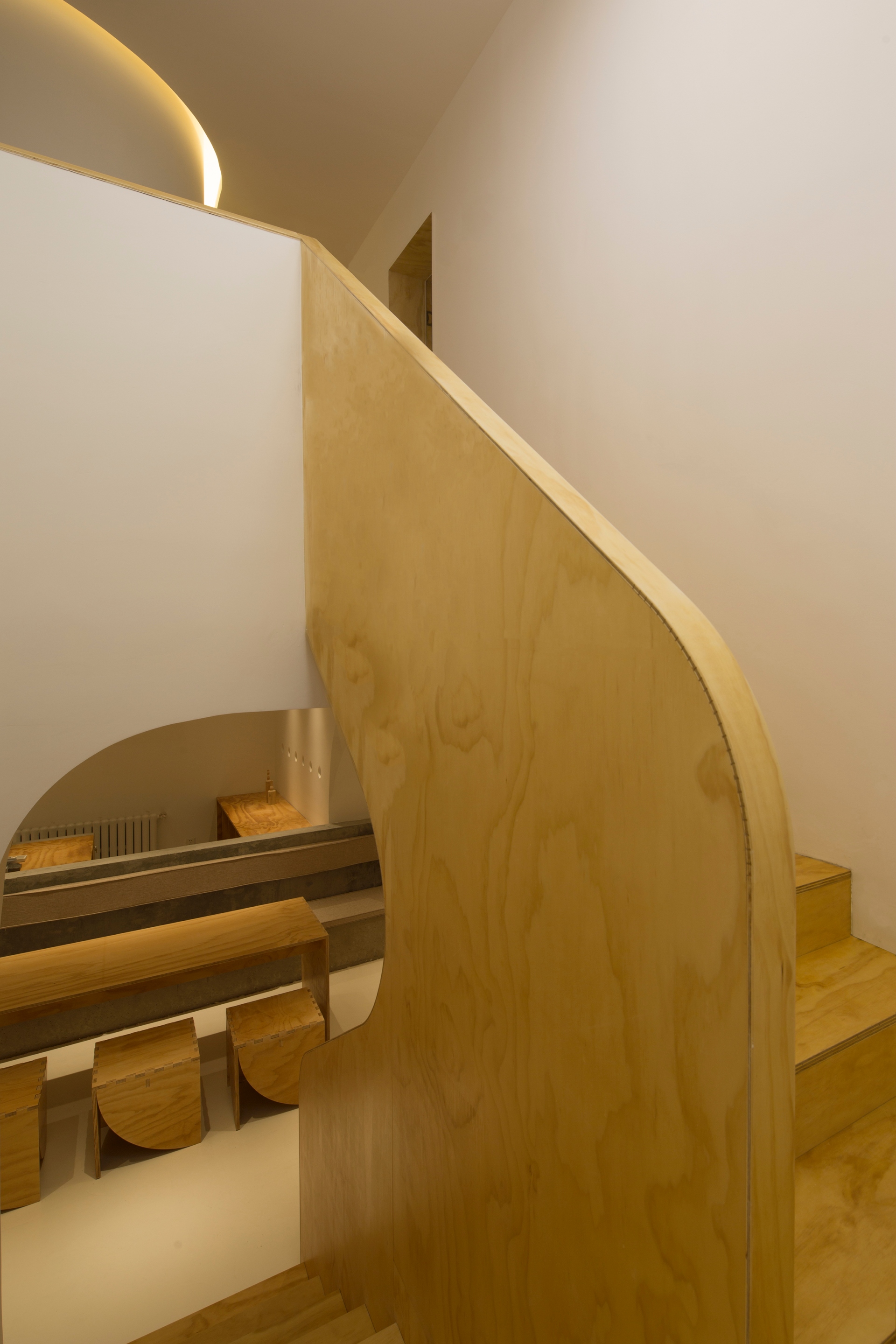
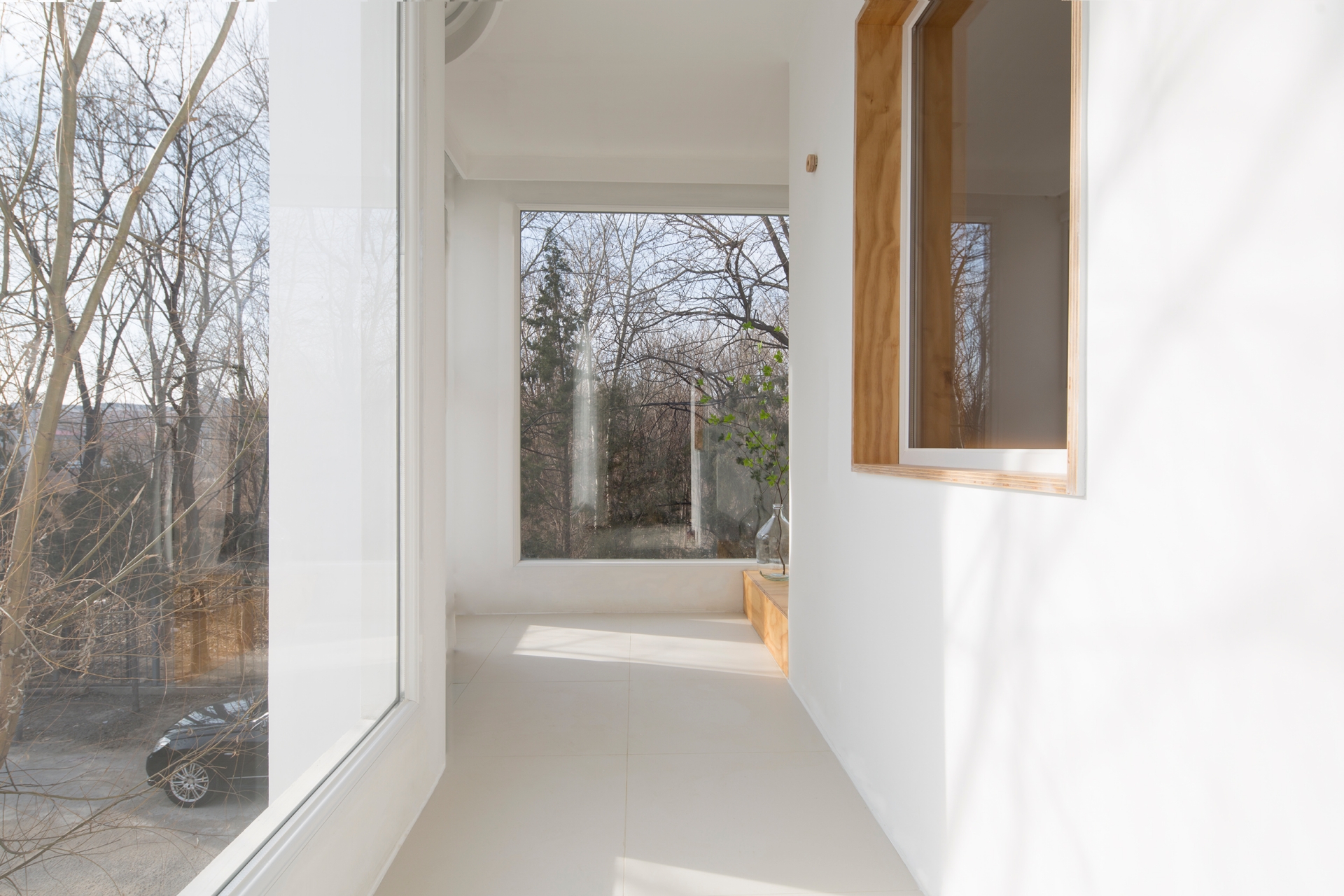
One of the challenges of the project was the strict budget to be adhered to - therefore, the designers had to think outside the box in how to use the simplest materials and techniques to create the most distinctive spatial experience. For example, what colour could be used to describe the colour of dreams? That is an endless white. In this all-white space, everything seems extraordinarily true and pure. Like an ant falling into a marshmallow, there are only stories far away from the outside world. The designers paid special attention when dealing with the line from wall to wall; each line is like the web that outlines the dream and their objective was to weave a simple dream with the simplest language. Like fog annihilated in the line of sight, this would disappear in all the poetic white space.
